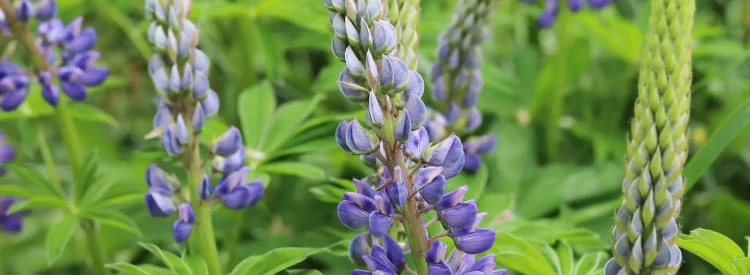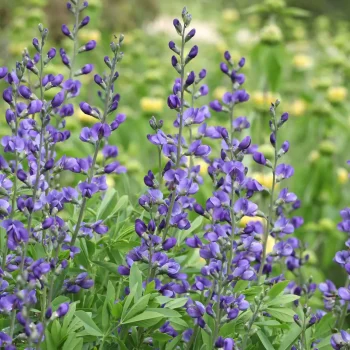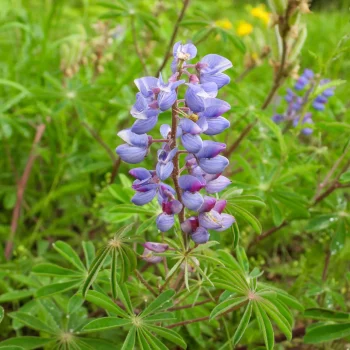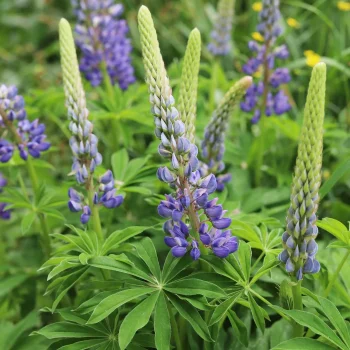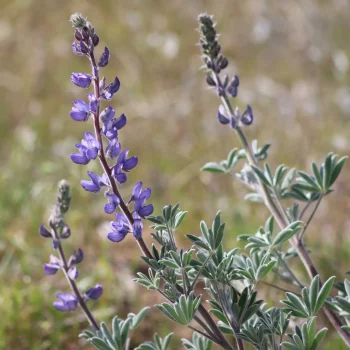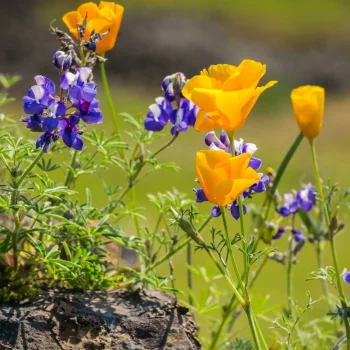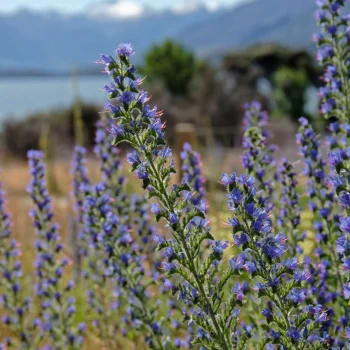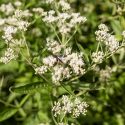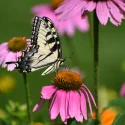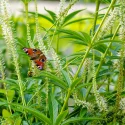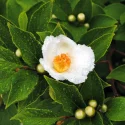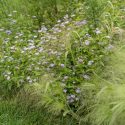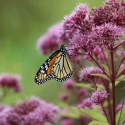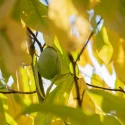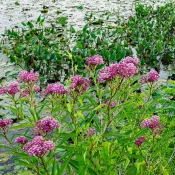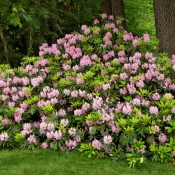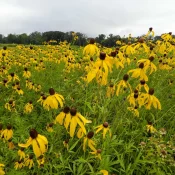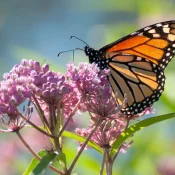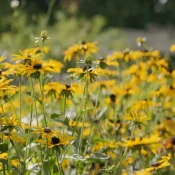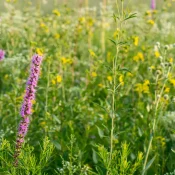Lupines are generous, beautiful, and unique plants. They are generous because they are nitrogen-fixers, or plants that can take nitrogen from the air and turn it into a usable form for plants. They are beautiful because…well, you know why. There are 250+ species of lupine worldwide. Most native lupines come from the western United States. Scroll on to meet some North American native lupines.
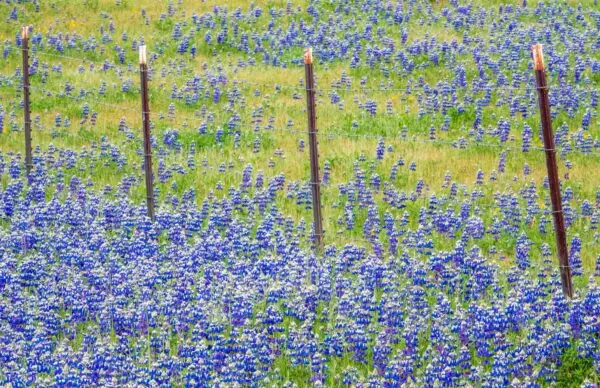
First, you may have come here by Googling ‘lupine.’ As we said in the intro, there are 250+ species of lupine worldwide. Let’s briefly cover what native lupines deliver.
What are the benefits of planting native lupines?
Before North America was covered in people, it was covered in plants. Native plants are plants that have existed in our home areas for thousands of years.
Native plants have superpowers in their home area
The plants native to where we live have thrived through every drought, storm, and crazy weather event. Their DNA knows your area better than any other plants on earth.
Planting native plants like native lupines is essential for lots of reasons, including:
- Wildlife support: Native plants are the favorite food and homes for butterflies and birds
- Built-in resiliency: Native plants have happily existed for thousands of years in their home area; they know our soil and seasons
- Save money and time: Planting native lets you be a lazy gardener! After native plants are established, they are happy with rain
New to native?
Before lawns and landscaping, native plants were here. They’ve fed birds, bees, and butterflies for thousands of years—and they’ll do the same in your yard. The best part? They’re easier to grow than you think.
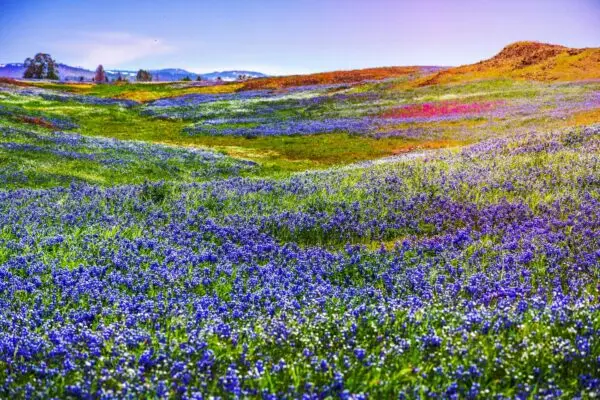
These are just a few reasons why planting native plants keeps our yards and landscaping gorgeous with less work. (Did you know lawns can take 2400% MORE TIME than native gardens?)
Now that we know what makes a native lupine special let’s dig deeper into lupines (pun intended.)
What is a lupine, anyway?
What makes a lupine, a lupine? No matter the species, lupines are known for a few tell-tale characteristics:
- Towers of flowers. Each plant puts out several of these towers on tall stalks.
- Pea-pod-like seed pods. Those tall towers of flowers turn into pea-pod-shaped seed pods, each filled with multiple seeds.
- Radial leaves. These leaves can be small or wide, depending on the species. But overall, their leaves are also something to be admired.
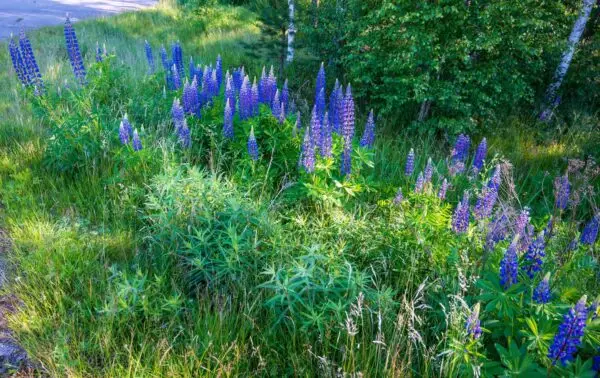
Finally, native lupines have one more special characteristic.
Native lupines are nitrogen-fixers
Native lupines pull nitrogen from the air and convert it into plant fertilizer.
I know what you might be thinking.
Can’t all plants do this?
Plants are incredible, but only a few special ones can pull nitrogen from the air and soil and turn it into nitrogen usable to plants. Incredibly: “Although the atmosphere consists of 78.1% N2 gas, plants cannot use it unless it is converted into a usable form” (source).
Enter plants in the legume family (Fabaceae)
The Fabaceae family includes many plants you know—clover, peas, alfalfa, and North American native plants like False Blue Indigo and…lupines!
Plants within the Fabaceae family can pull nitrogen from the world and convert it into a kind that fertilizes plants. They don’t do this magic trick alone; they do it with helpful bacteria in their roots called rhizobia.
A quick love letter to Fabaceae
This plant family is so generous
Plants in the Fabaceae family produce extra nitrogen, which is available to the plants and soil around them. Every single native lupine not only makes your garden lovely but also fertilizes all the plants around it.
This is why Fabaceae plants like alfalfa are used as ‘cover crops’—they are grown to release nitrogen in the soil for the next crop to use. Magical, right?
Now that we know how generous native lupines are let’s explore some native options and their ranges.
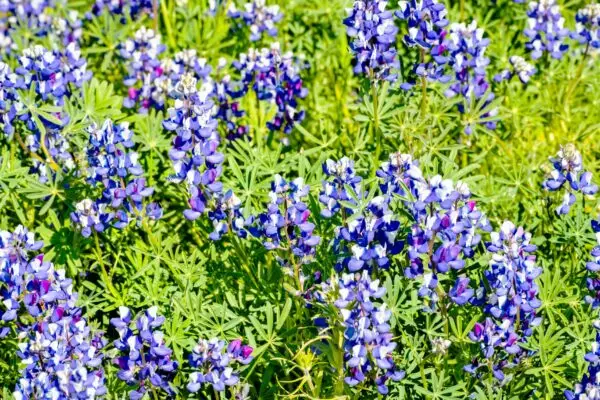
Meet the North American native lupines
As mentioned—there are 250+ lupines worldwide. Here are some lupines native to North America to seek out at local or native nurseries.
Native Lupines for the Eastern Seaboard
Sundial Lupine
Lupinus perennis
These native lupines are happily found from Maine to Texas—draw a line in the middle of the United States, and everything on the right side is home to Sundial Lupines. Sadly, finding Sundial Lupines (also sometimes called ‘Wild Lupines’) might take some effort. Visit native nurseries in your area and order seeds to find them. (Sundial Lupines are also host plants for 6+ butterflies, including Silvery Blues and Eastern Tailed Blues.)
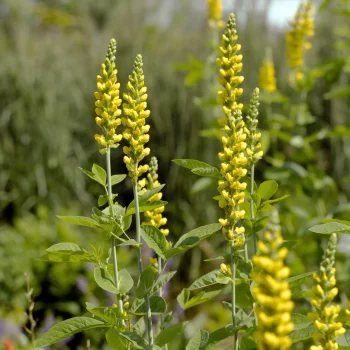
Carolina Lupine
Thermopsis villosa
Carolina Lupine offers something different: bright yellow flowers! This native flower is found from Maine down to Georgia. Although it’s not in the Lupinus genus, it’s still in the Fabaceae family. Enjoy its blooms, ability to withstand southern heat, and its ability to fertilize the plants around it.
Carolina Lupines can get tall—up to 6′! Plant them in the back of sunny gardens and put shorter natives around and in front.
Native Lupines for the South
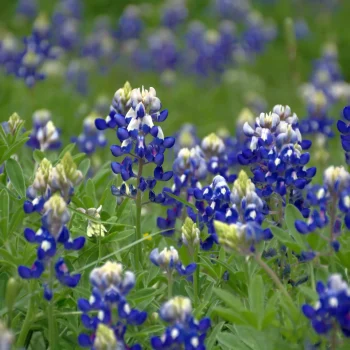
Texas Bluebonnet
Lupinus subcarnosus
These are the state flower of Texas and often seen alongside highways (special thanks to Ladybird Johnson). The common name includes six different species of lupine that generally look the same: a runway of 50 flowers, mostly cobalt, ending in a white tip. Texas Bluebonnets are annuals—they grow from seed every year. Thanks to 50-buds-per-flower, this plant easily reseeds itself.
Native Lupines for the Northwest
Bigleaf Lupine
Lupinus polyphyllus
These native lupines are originally from the Pacific Northwest but have overtaken the Eastern side of the United States. Their leaves are slightly bigger than Sundial Lupines (hence the name.) You can also see that the flowers are more ‘compact’ or tighter together than the Sundial Lupine seen earlier.
Broadleaf Lupine
Lupinus latifolius
These plants, which top out at 4′ high, send up stalks of stately, majestic flowers. Broadleaf Lupines are also host plants to several butterflies, including Orange Sulfurs and Silvery Blues. They are native to a wide range of the western United States, from Washington to New Mexico.
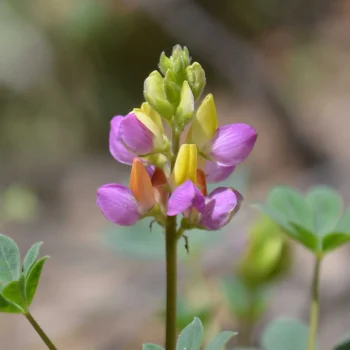
Harlequin Lupine
Lupinus stiversii
Wow, these are stunners for central California gardens. Harlequins are known for their gradient of yellow to purple flowers. These flowers have a small habitat along the Sierra Nevada mountains. If you’re lucky enough to live in that range, find your local native plant society to find some.
Sky Lupine
Lupinus nanus
Do you live in California or Nevada? This is a native lupine for you. (These are also the iconic lupines frequently photographed during superblooms.) Sky Lupines are shorter, delicate native lupines (6 inches to 2 feet.) You’ll also notice their leaves are much smaller compared to Big-Leaf, Sundial, or Texas Bluebonnets. Plant them alongside another iconic native flower—California Poppies—and enjoy bright, pollinator-filled gardens.
Summer Lupine
Lupinus formosus
This drought-tolerant Lupine offers small leaves, but elegant purple flowers on tall stalks. It’s also shorter than other lupines, topping out around 2 feet tall. You’ll find these flowers in dry areas in California and Oregon. Finally—Summer Lupines are host plants for several butterflies, including the gorgeous Acmon Blue and Arrowhead Blue species.
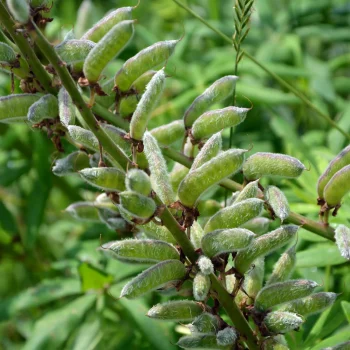
Note for kids and pets
Lupine seeds are poisonous!
Lupines are in the pea/legume family, and you’ll see this family tree clearly when you see lupine seed pods. The seeds inside are poisonous if eaten. If you’re worried about nibbling, visit our native plant library to find other native gardening ideas.
Most North American native lupines are from the Northwest
Of the 250+ lupines worldwide, most of North America’s are from the Pacific Northwest (California, Oregon, and Washington). This native range is partly why most native lupines like cool weather mornings, well-drained soils, and are drought tolerant. Most lupines have DNA built for the Pacific Northwest climate.
Now, you may be asking…
Why are lupines associated with Maine?
You may have seen the photo of lupines and connected the plant to Maine, or even specifically, Acadia National Park. We have some sad and surprising news: most of the lupines in Acadia are Bigleaf Lupines (Lupinus polyphyllus), native to the Pacific Northwest.
We know—it shocked us, too!
How did this native lupine mix-up happen?
The short answer is landscaping. And it happened quickly, too—the National Park Service estimates that the western US lupines started appearing in the Northeast in the 1950s. Since then, landscapers and homeowners in Maine have planted Bigleaf Lupines in big numbers. Since the climate in Maine is similar to Bigleaf’s native zone, these plants have thrived.
The sad news is that Maine does have its own native lupine—the Sundial Lupine. But now, most of the lupines found in Acadia National Park are the non-native Bigleaf. (The Park Service is trying its best to fix this, but it will need homeowners’ help too, to make any meaningful change.)
Let’s all help bounce back from this landscaping error and plant the lupines native to our area. Thankfully, we’ve got a lot to pick from.
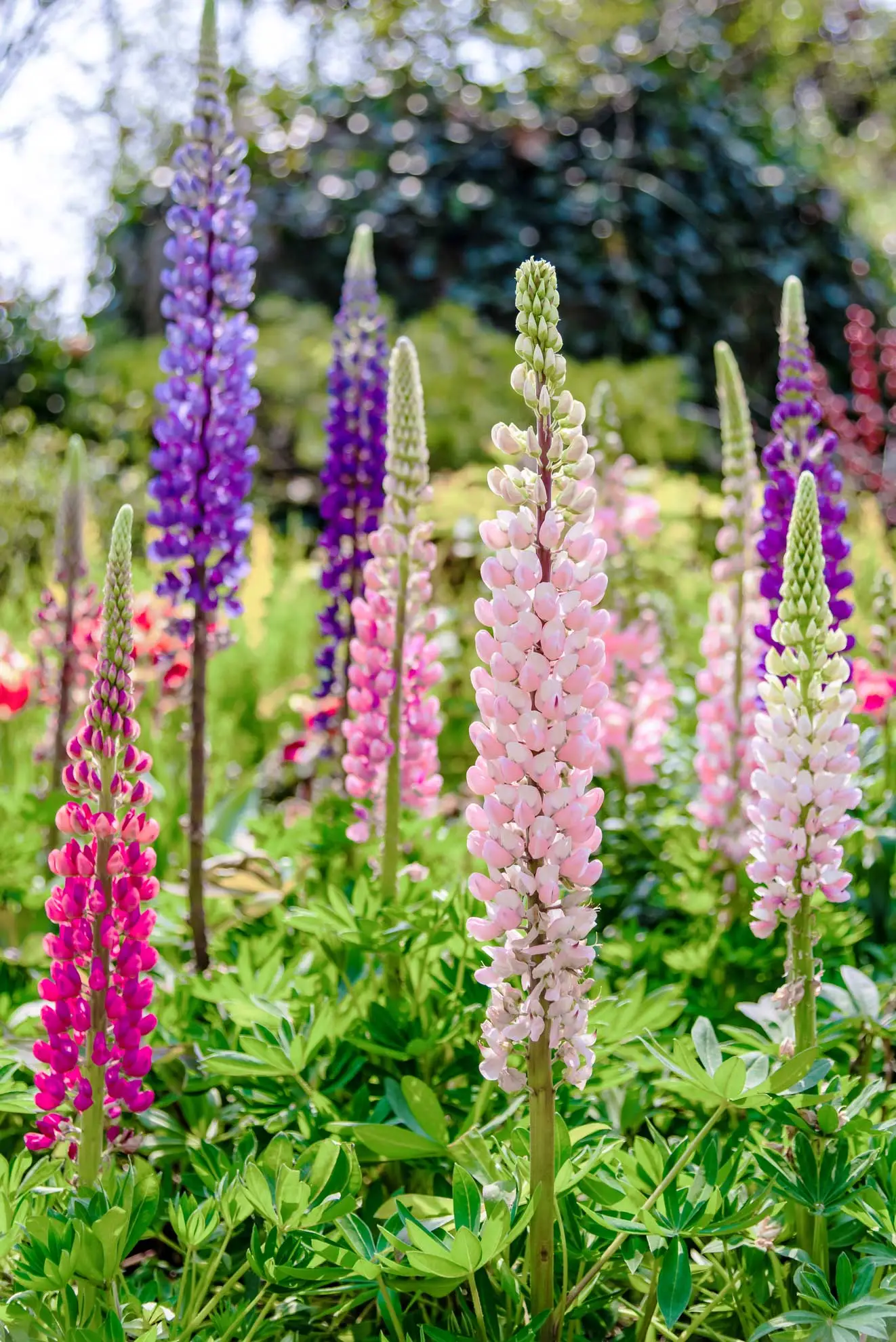
What about multi-colored lupines?
You may have seen multi-colored lupines in seed packets, nurseries, or big-box retailers. Most multi-colored lupines are a Bigleaf Lupine cultivar called 'Russell's Mix.' Cultivar stands for CULTIivated VARiety. These are plants curated and manipulated by humans to look or behave a certain way. Cultivars are complicated—they give us endless options, but they are not the preferred food or homes for our pollinators and wildlife. The Plant Native strongly recommends planting true native plants whenever you can.
What are good pairings for native lupines?
As you can imagine—native lupine pairings depend on where you live.
For those on the western side of the country, plant native lupines alongside California Poppies (orange + blue is a perfect garden combo).
If you’re on the eastern side of the country, explore our regional garden guides to find inspiration.
And that sums up our love letter to native lupines! Enjoy their verdant leaves, then their flowers, then their sculptural seed pods in the fall. Planting native lupines gives our gardens beauty for years, all while these plants quietly fertilize the plants around them. It might take a little vigilance, but do your best to ensure you’re planting native lupines found in your area (it might mean checking the Latin name on the tag, but don’t feel intimidated—if we can say ‘frappucino,’ we can navigate Latin botanical names.) Plant as many native lupines as you can, and give away the seed pods to friends, neighbors, and family members in the fall so they can grow their own. Explore other native favorites in our Beginner’s Guide to Coneflowers or our Beginner’s Guide to Native Hydrangeas. Happy planting!
Sources
- USDA Plants Database, Texas Bluebonnet
- USDA Plants Database, Sky Lupine
- USDA Plants Database, Bigleaf Lupine
- Texas A&M University, Texas Bluebonnet
- North Carolina State Extension, Carolina Lupine
- Craigmyle, Marshall. “The Illustrated Encyclopedia of Perennials.” (2002), 181-182.
- Ladybird Johnson Wildflower Center, Texas Bluebonnet
- Pyle, Robert Michael. Gardening for Butterflies: How You Can Attract and Protect Beautiful, Beneficial Insects. (2016), 109, 149, 154.
- Allen, Ray. “Everybody Loves Lupines.” American Meadows, n.d.
What if your feed was actually good for your mental health?
Give your algorithm a breath of fresh air and follow us.
